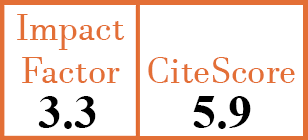Full Papers
Anti-TNF-α treatment in rheumatoid arthritis with anti-Ro/SSA antibodies. Analysis of 17 cases among a cohort of 322 treated patients
I. Cavazzana, F. Bobbio-Pallavicini, F. Franceschini, C. Bazzani, A. Ceribelli, E. Bravi, S. Zingarelli, R. Caporali, R. Cattaneo, C.M. Montecucco
CER3133
2007 Vol.25, N°5
PI 0676, PF 0683
Full Papers
Free to view
(click on article PDF icon to read the article)
PMID: 18078613 [PubMed]
Abstract
OBJECTIVES:
To compare the efficacy and safety of anti-TNF-α treatment in RA patients with and without anti-Ro antibodies, in order to detect any change in their immunological or clinical profile.
METHODS:
Autoantibodies in 322 patients being treated with anti-TNF-α drugs were studied; 17 were found to be anti-Ro positive, while 305 were anti-Ro negative.
RESULTS:
Two groups, comparable in terms of sex distribution, RA duration and anti-TNF-α drug employed, showed symmetrical, erosive polyarticular RA with high disease activity. Anti-TNF-α led to significant improvement in both groups. At baseline rheumatoid factor and ANA, globally positive in 68.6% and 40%, were more frequent in anti-Ro positive sera. ANA showed a rising trend beginning in the 6th month of treatment in both groups, which was always statistically significant compared to baseline. Anti-dsDNA antibodies, measured using either CLIFT and ELISA or the Farr assay, remained stable in the first 6 months, then increased at 12th and 18th month, and subsequently declined. No difference was detected between the two groups regarding the number or cause of dropouts, but lupus-like disease was more frequent in anti-Ro positive subjects (p = 0.012). In addition, two cases of NHL were detected.
CONCLUSIONS:
Anti-TNF-α treatment was shown to be effective in patients with anti-Ro antibodies. Although anti-dsDNA and lupus-like disease were more frequent in anti-Ro positive patients, severe manifestations of systemic involvement were not observed. A longer follow-up is warranted to evaluate the risk of NHL in these patients.


